Breakfast is one of our key indicators of a good hotel. The Imperial Palace buffet breakfast was located in a basement restaurant and although it displayed a limited array of dishes, the fruit was beautifully fresh and the hot dishes were good.
The hotel appeared to accommodate mostly business clients, many of whom were part of a conference being held within the hotel. Unlike the genial staff, the breakfast patrons were particularly unfriendly, gazing at us with blank, unsmiling faces and barely raising an eyebrow to our morning greetings. We shuddered as we remembered our previous years of work conferences. Perhaps they were all suffering from acute boredom?
A brilliant sunny day greeted us. We were both looking forward to our first trip into the Armenian countryside and a visit to the old monastery of Khor Virap, site of the ancient city of Artashat the first capital of Armenia, just 100 meters from the Turkish border and the closest site to Armenia's beloved Mount Ararat.
David and Hovik were in fine spirits too. David, neatly dressed in a fresh striped polo shirt and jeans and Hovik, immaculately attired as usual in a crisp pink shirt, matching tie and wearing fashionable wrap around sun glasses, chatted happily to us about our tour. During our thirty kilometer drive to Khor Virap they became more serious, talking earnestly about life in general for modern day Armenian people.
Like most cities, the outskirts of Yerevan, were largely industrial but not far out of the city, the countryside became surprisingly rural and small farms and agricultural industries dominated a mostly flat alluvial landscape. Occasional abandoned and decaying Soviet factories featuring massive brutal Soviet architecture were sobering reminders of a not so distant era.
David spoke sadly of the hardships endured by his people following the Soviet collapse when the Russians withdrew almost overnight from Armenia, leaving the country in a state of astonished abandonment. Until Independence, Armenia's economy was controlled and largely supported by Russia, its industries based mostly on chemical production, electronic products, machinery, processed foods, synthetic rubber and textiles. Interestingly, agriculture accounted for only 20% of net material product.
Passing a number of deserted, corroding synthetic factories, David commented about the state of Armenian industry after Independence. "We once produced refrigerators, motor cars, and processed synthetic rubber. Like many of our (abandoned) industries, we should have not stopped the rubber processing" he lamented. But like a number of other key industries, it was let go and forgotten after the Russian government withdrew not only its senior management and infrastructure, but also its massive funding, which while supporting the Soviet States, was breaking mother Russia.
Despite its economy being grossly impacted upon by the Armenian Independence and the abrupt withdrawal of the Soviet Union in 1991, the devastating effects of the 1988 earthquake, together with the Nagornao-Karabakh war and resulting border blockades with Turkey and Azerbaijan, Armenia's economy has in fact undergone a surprising transformation since Independence. Sustained growth, ambitious reforms, as well as inflows of capital and remittances especially from the Armenian diaspora, have created a much enhanced economic environment.
After Independence, Armenia registered positive economic growth rates of near 14% but following the Global Financial Crisis, it contracted severely and between 2013- to 2014 had declined to around 3.4% due to a reduction in private consumption and public investment.
Today, despite reasonable economic growth, Armenia suffers a crippling and deeply worrying unemployment rate of some 17.3%. For many Armenians, jobs are virtually non-existent and a whole generation has emigrated to work overseas. New emerging industry sectors providing some economic relief include mining of non-ferrous metals, precious stone processing, jewellery making, textiles, machinery and tools, communication technology and software development. Agricultural industries, including wines and the famous Armenian "cognac", are now major sources of employment.
The main road to Khor Virap was closed and we were forced to take a rough unmade back road. Hovik apologised about the bumpy ride. We were more concerned about his impeccably presented car. Our travels took us through extensive vineyards and lush green pastures, and we were more than happy to have the opportunity to gain a good appreciation of the Armenian countryside. Spring had really sprung in bucolic Armenia.
Our conversation with David and Hovik drifted onto the Armenian power crises following the 1988 Spitak earthquake when for safety reasons the government closed down the Metsamore Nuclear Power Plant, Armenia's only nuclear power station which was located just 75 kilometers from the epicentre of the earthquake. David told us that the government eventually apologised to the Armenian people (albeit it blaming of course the opposition party) saying it was wrong to close the power station but it must have been an impossible, if panic-driven decision; it was in fact just two years after the catastrophic Chernobyl nuclear disaster in the Ukraine.
Power crises were further aggravated by Armenia's Independence and the following Nagorno-Karabakh war resulting in Azerbaijan and then Turkey imposing trade blockades, severely affected the routing of oil. In all, Armenia was without power supplies for a period of six very long years, during which it was at war with neighbouring Azerbaijan. The tragedies of Armenia kept pouring out.
Today, nuclear power provides some 40% of Armenia's electricity. Russia provides nuclear fuel as well as gas, and following the completion of a pipeline in 2009, gas is now imported from Iran. Hydroelectricity supplements other power generation but the resulting environmental impacts, especially on Lake Sevan have been substantial.
MOUNT ARARAT AND KHOR VIRAP
Driving across the fertile Ararat Plain toward the Turkish border, the rural countryside was pleasant but relatively featureless. A dazzling morning sun scorched its way through an early morning haze and to our amazement, the magnificent Mount Ararat arose from seemingly nowhere; the imposing massive dominating the skyline with its towering snow clad twin peaks.
We had read that many diasporan Armenians on viewing the mountain for the first time, are moved to tears with emotion. There was certainly something extraordinary and even quite overwhelming about this mountain. It was fantastically beautiful yet strangely ominous. And although it is at an elevation of 5,165 meters, it appeared so much larger than either Alan or myself had imagined. Was this really the small mountain that as a child I had coloured in and pasted on cotton wool for clouds during my Sunday School classes? Gazing at the sheer enormity of Ararat, it was perfectly understandable how this legendary mountain, with its soaring heights and plunging abysses, has generated myths and worship for many thousands of years.
Hovik pulled the car over to the side of the road where we could gain a good view. To our absolute delight, a most beautiful citadel and church spire nestled on the side of a rocky crag and facing the monumental massive, was now clearly visible. In the shadows of the famous Mount Ararat, the stunning church and the monastery of Khor Virap simply shone in a brilliant morning sunlight.
Staring at this famous biblical site, it was not at all difficult to imagine that we were in fact under the steely gaze of Noah.
Throughout our travels, and especially through the deeply pious countries of Armenia and Georgia, my atheism was constantly questioned; the deeply rooted and highly overt religious beliefs of the fervent people constantly tugging at my inner psyche. One minute I was silently incredulous hearing a seemingly ridiculous holy story or of a miracle performed, another time I was completely overwhelmed by a congregation of four poor women singing in a tiny church in the middle of mountainous nowhere.
For me, the history of Khor Virap was in the former category although I had to admit that the charming St Astvatsatsin church and monastery were quite ethereal. The story of St Gregory the Illuminator surviving a dreadful 13 year imprisonment by King Tiriidates III, in a pit of snakes and venomous was more than a bit out of the ordinary - but full of symbolism. According to legend, his survival was solely due to the care of a Christian woman who, under the influence of a strange dream vision, fed Gregory a loaf of bread which she dropped down the pit each day. The King was later cursed by uncontrollable madness; some stories relating that he sprouted the head of a boar. He was apparently cured by St Gregory and in 301 AD he converted to Christianity and St Gregory became the first Catholicos of the Armenian Apostolic Church, whereby he began a program of building churches over pagan temples and preaching Christianity. And hence Armenia was the first country to adopt Christianity as its official religion.
Khor Virap has become one of the famous places of pilgrimage in Armenia. The name of Khor Virap literally translates to "deep well" and it does in fact house a 60 meter well and two deep pits, one of which was where St Gregory was apparently tortured and imprisoned.
The climb up to Khor Virap was relatively steep but the views at the top of Mount Ararat and the surrounding Ararat Plains were stunning. Hovik offered to take us down the ladder to the famous pit but we thought we could do without it. The ambiance of the church and the fabulous views were good enough for us. Khor Virap is well worth the visit and an excellent on-site introduction to the deep-rooted, proud Armenian culture.
Our journey from Khor Virap to our next site visit of Garni took us through the flat Ararat Plains following the Turkish border north beside the Araz River. Heading barley and other cereal crops, wine grapes and fruit orchards appeared to be the dominant agricultural enterprises, along with sheep and the occasional cattle grazing stone splattered pastures. Pretty flaming red Flanders poppies dotted the rocky landscape. Interestingly, farming was still relatively primitive and we noticed there was very little large agricultural machinery or equipment. Women still chipped weeds by hand and simple roadside stalls sold sour cherries, dried fruits and the ubiquitous sticky sausage tubes of Churchkela. Steeply pitched roofed houses, very much like those we witnessed in Kyrgyzstan, were testament to long cold, snowy winters.
With lots of young vineyards as well as older wine grape crops, viticulture was obviously an important agricultural industry. David explained to us about Armenian wines and cognac. Apparently, cognac has been made in Armenia for the last 100 years and today the Armenian product is regarded worldwide for its especially high quality. "The French tasters when they first tried our cognac, went crazy over it and even today it is still called 'cognac', although technically only wine grown in the Cognac region of France should be known by this name" he informed. For some reason we didn't get the opportunity to sample any Armenian cognac and offer our experienced opinion. After a particularly memorable cognac tasting in Hokkaido in northern Japan some years before, it was probably a good thing!
David told us the sheep in this part of Armenia were considered superior quality for eating. We were rather gob smacked to hear that sacrificial rituals (sheep and chickens only) are still practised by Armenians; residual pagan traditions David told us that are "close to our hearts". Sacrificial rituals are undertaken as thanksgiving for a special reason which may be a person recovering form a serious illness, or even a student doing well in university exams. David recounted how his father-in-law would purchase a sheep and some local salt from the church. The salt, blessed by the priest is placed in the mouth of the animal before slaughter. The carcass would then be boiled with the blessed salt with no other spices or additives.
The sacrifices these days are technically illegal but the priest will allow it if the meat of the animal is shared with a number of families; the justification being that this would then be regarded as a Christian act. I cannot imagine the sheep would agree. It is curious also that what we (I) would consider as an ancient and totally unnecessary act these days, is still deeply rooted in the religious psyche (at least some of) the Armenian people.
We were intrigued by the naked gas pipes that lined the roads, bobbing up, down and over to accommodate gateways and fence lines. What on earth would happen if a car accidentally ran into one causing sparks from the metal, we wondered. There wasn't really an answer required. It was all too obvious it was a death trap waiting to happen.
Natural gas is mostly piped from Russia (Gazprom) through Georgia and as a transit fee, Armenia pays Georgia approximately 10% of the gas that was destined to reach Armenia. Iran has the capacity to provide a large proportion of Armenia's natural gas but to date, Armenia has declined, presumably as a result of pressure from Russia to maintain its monopoly over natural gas supply. In contrast, Iran's 450 million cubic meters per year of gas exports to Armenia in exchange for electricity are just a quarter of Gazprom’s supplies. For payment, Armenia provides Iran with three kilowatt-hours (kWh) of electricity for every cubic meter of gas it receives.
GARNI TEMPLE COMPLEX
Garni was a particularly pretty village housing quaint tufa stone (a variety of limestone) cottages surrounded by orchards and flowering meadows. The village is set at an elevation of 1,500 meters in a picturesque mountainous region approximately thirty kilometers south-east of Yerevan. Housing a population of some 10,000 people it is one of the larger villages in the Kotayk Province of Armenia and is a major producer of walnuts, apricots, apples and cherries. Its main claim to fame however is the famous Hellenistic Garni temple.
Garni temple is the only Greco-Roman colonnaded building in Armenia and is the best known pagan structure in the country. The temple which is part of the Garni fortress, is dedicated to Helios the Roman god of the sun and was built by King Trdadt I in the 1st century AD. Following Armenia's conversion to Christianty, the temple was used as a summer house for Armenian royalty. Interestingly, one school of thought is that the structure was not a temple at all but a tomb and hence its survival through the universal destruction of pagan temples following Christianity.
The area surrounding the Garni temple has been inhabited since neolithic times. The temple is perched high on a triangular promontory naturally protected on three of its four sides by deep gorged valleys. Following its collapse during the 1679 earthquake, the temple was left in its ruined state for centuries and it was not until 1975 that it was finally re-constructed. The temple complex includes bath houses, a royal summer palace, the 7th century church of St Sion and several medieval "khachkars" (carved, memorial pillars bearing a cross, and often with additional motifs such as rosettes, woven interlace patterns and botanical motifs).
The commanding Garni Temple is of the typical style of Ancient Greek Architecture. It looked oddly alone and even slightly out of place on the promontory, staring down at its protective and luxuriantly forested three gorges. Looking out onto the gorges were a series of very wealthy looking houses, with beautifully terraced gardens and elevated swimming pools. Apparently they are the homes of wealthy politicians and developers. Enough said....
The ancient Bath House is located close to the temple and is encased in a modern shed. Built of irregular blocks set in lime, the 3rd century building consisted of five rooms. Interestingly, the builders used an ingenious water reservoir and a heating system which was popular in ancient Rome, known as hypocaust. Hot air from the furnace circulated through an underground passage lined with baked clay bricks under the floors which were also lined with baked bricks covered with polished stucco and mosaic tiles. The floors were laid on brick supports that also captured heat from the furnace evenly passing the heat up into the various rooms. Today, replicas of the brick supports are in place in the old baths. Fragments of colored plaster work have also survived as have some of the 3rd-4th centuries floor mosaics.
GEGHARD MONASTERY
There is no doubt about the convenience of this day trip from Yerevan. The three sites of Khor Virap, Garni and Geghard are located within an easy thirty kilometer radius from the city centre and all are well worth the visit.
Geghard Monastery is only eleven kilometers east of Garni, and not surprisingly, a number of tourist oriented shops are strategically located along the roadway. We stopped at an open air bakery where two women were making fresh lavash. The women were not young but somehow they managed to kneel in what appeared to be a permanently impossible position as they mixed, kneaded and shaped the soft lavash dough. Alan was in his element. He simply loves nothing better than fresh bread and this lavash was particularly delicious, baked on the furnace hot walls of a dome shaped oven. When we asked David how much money we owed the women and he replied that the small piece of bread we sampled was free of charge. We were horrified and somehow managed to surreptitiously slip some money into a piece of paper and hand it to the older of the two women. The woman slipped the money aside, showing us only the slightest wisp of a smile.
Geghard Monastery is the prettiest complex. Looking like something out of a Walt Disney fairy story, the monastery is situated in a lushly forested canyon surrounded by spectacular sheer mountain walls, the beautiful Azat River Gorge and freshly running streams.
Named after the holy lance that pierced the side of Jesus Christ at his crucifixion, Geghard or Geghardavank meaning "Monastery of the Spear" is a medieval monastery that is partially carved out of the surrounding mountain. The spear was kept at Geghard for some 500 years but now it is housed in the holy treasury of Echmiadzin - the equivalent of the Vatican of the Armenian Apostolic Church. Some of the churches in the complex are entirely dug out of the cliff rocks, others are little more than caves where monks were once housed. And there are a few more elaborately built structures with complex rooms built deep into the cliff face.
According to legend, the monastery was founded in the 4th century by Saint Gregory the Illuminator at the site of a sacred spring inside a cave. The main architectural complex was completed in the 13th century AD and consists of the cathedral, eastern and western rock-cut churches, ancient royal tombs, as well as various cells and numerous khachkars. Today, the monastery complex is listed as a World Heritage Site.
Inside the monastery walls, Geghard's two main churches date from the 13th century. The largest church is the Katoghike Chapel which was built in 1215 under the auspices of two generals of Queen Tamar who were famous for returning most of Armenia from the Turks. A rock-attached vestry links the main chapel to smaller chapels which are carved entirely into the rock.
One of the tiny rock carved chapels, the Avazan was absolutely enchanting. It was entirely dug out of stone in the 1240's and houses a small basin filled with running spring water which is deemed to be holy water. The chapel had great atmosphere and wonderful acoustics. Standing alone in the lonely rocky chamber, you could almost hear the passionate singing and fervent prayers of the faithful of the many, many centuries past. Perhaps this may have been the very cave where St Gregory the Illuminator founded the monastery after the adoption of Christianity?
Outside the complex are a series of stairs leading up to other caves, monastic cells and more khatchkars. The khatchkars at Geghard are thought to have been erected in the memory of a deceased person or an important individual who has contributed a monetary donation to the monastery. Some practices appear not have have changed over the centuries.
A PERFECT LUNCH AT THE THREE JUGS B & B
Following our tour, David informed us that his company had organised a barbeque lunch, compliments of Armenia Silk Road Tours. To date, we had enjoyed not eating too much during the day, snacking only on salads and fresh bread when we felt like it. It was quite a breakthrough not to be on a tour where we would be sat down for a heavy midday meal which we neither wanted nor needed. Today however, a barbeque lunch sounded just what we felt like - even if our waistlines certainly did not need it.
Armenia has some lovely places to enjoy a casual picnic style meal. The welcoming Three Jugs B & B is located just outside Yerevan and comprises a family home situated in the grassy surrounds of an apricot garden. The B & B is well set up for the tourist trade, catering for authentic Armenian meals in attractive individual cabana like cabins as well as providing B&B facilities, art tours, activities, seminars and workshops.
Our lunch comprised huge plates of barbequed meats, salads, cheeses and freshly made lavash, all served on a well set up table complete with cloth table linen. The friendly staff also served us with homemade wine, and a delightful fruit vodka. It was all rather blissful just to sit and enjoy good food with the fine company of David and Hovik.
The Three Jugs B & B is located at the beginning of the H-3 Highway to Garni-Geghard, Yerevan. Email: threejugs@gmail.com, info@threejugs.com
A WARM ARMENIAN WELCOME AT HOVIK'S FAMILY HOME
Over lunch Hovik invited us to visit his family for tea at his home in Yerevan. We hesitated, knowing that it was quite an imposition on his family for anyone arriving unannounced at their home late in the afternoon, let alone two foreign tourists. Hovik however was very keen for us to meet his family and so, with a bit of prompting by David who obviously thought it was a great idea, we accepted gratefully.
Lots of phone calls took place and Hovik stopped on our way to his home for some pretty serious shopping. We were well aware that he was going out of his way to treat us as his special guests and we felt very honoured, if rather embarrassed at the amount of trouble he was going to.
We were warmly greeted to Hovik's home by his wife Anjela, his mother Karine and father Sos, Mariam a close family friend and Hovik's daughter Karine and two young sons Sos and Gor. Hovik's spacious house accommodated all his family. At the time it was under renovation and Hovik proudly showed us through the home and discussed the extensions he was adding. He was also very keen to show us a display of the many trophies his eldest son had won for Latin American dancing. Mariam later told us that Hovik's family were "wonderfully good people" and that Hovik and Anjela were god parents to over one hundred children. And like Hovik and his family, his home exuded a real warmth and friendliness.
Hovik was particularly proud of the enormous undercover barbeque he built and was keen to show me some huge long swords for which he uses to cook potatoes and meat. As in Australia, out door eating and entertaining is apparently very popular with Armenians and it was rather lovely to sit in the open enjoying fresh fruit and coffee, and discussing life in Armenia while Hovik's youngest son entertained us with some very amusing Latin American dancing.
We thoroughly enjoyed our afternoon with Hovik's family. It was somewhat of a surprise to be recipients of now two very generous invitations to join local people in their homes. It was even more of a surprise for us that we made the visits. Those who know us well, also know that we are pretty private when we travel and do not normally go out at all when we are home. Little did we know that there were to be a further three more such invitations on our travels through the Caucasus.
Under the Gaze of Noah
Monday, May 18, 2015
 Yerevan, Armenia
Yerevan, Armenia
Other Entries
-
1The Inspiration: But Where are the Caucasus?
May 0810 days prior Crowdy Head, Australiaphoto_camera4videocam 0comment 0
Crowdy Head, Australiaphoto_camera4videocam 0comment 0 -
2Crowdy to Sydney - Save Us From a Bus Tour....
May 0810 days prior Sydney, Australiaphoto_camera11videocam 0comment 0
Sydney, Australiaphoto_camera11videocam 0comment 0 -
3To Shanghai - When a Snake Meets A Tiger
May 099 days prior Shanghai, Chinaphoto_camera13videocam 0comment 0
Shanghai, Chinaphoto_camera13videocam 0comment 0 -
4To Moscow - Two Contrasting Faces of Russia
May 108 days prior Moscow, Russian Federationphoto_camera5videocam 0comment 0
Moscow, Russian Federationphoto_camera5videocam 0comment 0 -
5Russian History Time Line Summary
May 108 days prior Moscow, Russian Federationphoto_camera9videocam 0comment 0
Moscow, Russian Federationphoto_camera9videocam 0comment 0 -
6A Walk with Svetlana - Absorbing Moscow City
May 117 days prior Moscow, Russian Federationphoto_camera42videocam 0comment 0
Moscow, Russian Federationphoto_camera42videocam 0comment 0 -
7We Get Hopelessly Lost in Moscow...
May 126 days prior Moscow, Russian Federationphoto_camera13videocam 0comment 0
Moscow, Russian Federationphoto_camera13videocam 0comment 0 -
8Aboard the Sapsan: From Moscow to St Petersburg
May 135 days prior St. Petersburg, Russian Federationphoto_camera18videocam 0comment 0
St. Petersburg, Russian Federationphoto_camera18videocam 0comment 0 -
9A Walk With Nadya: Absorbing St Petersburg
May 144 days prior St Petersburg, Russian Federationphoto_camera34videocam 0comment 1
St Petersburg, Russian Federationphoto_camera34videocam 0comment 1 -
10State Hermitage Museum & Adventures in St Petes
May 153 days prior St. Petersburg, Russian Federationphoto_camera22videocam 0comment 1
St. Petersburg, Russian Federationphoto_camera22videocam 0comment 1 -
11Once We Had No Armenian Visas - Now We Have Four..
May 162 days prior Yerevan, Armeniaphoto_camera5videocam 0comment 0
Yerevan, Armeniaphoto_camera5videocam 0comment 0 -
12The Caucausus - An Uncomfortable Dinner Party
May 171 day prior Yerevan, Armeniaphoto_camera4videocam 0comment 2
Yerevan, Armeniaphoto_camera4videocam 0comment 2 -
13The Caucasus - A Historic Timelime Summary
May 171 day prior Yerevan, Armeniaphoto_camera8videocam 0comment 0
Yerevan, Armeniaphoto_camera8videocam 0comment 0 -
14Armenia: Proud People of a Lost Land
May 171 day prior Yerevan, Armeniaphoto_camera25videocam 0comment 0
Yerevan, Armeniaphoto_camera25videocam 0comment 0 -
15Under the Gaze of Noah
May 18 Yerevan, Armeniaphoto_camera36videocam 0comment 2
Yerevan, Armeniaphoto_camera36videocam 0comment 2 -
16Lake Sevan - The Tranquility and The Terror
May 191 day later Gyumri, Armeniaphoto_camera36videocam 0comment 0
Gyumri, Armeniaphoto_camera36videocam 0comment 0 -
17Gyumri: God Will Heal Your Wounded Soil
May 202 days later Bavra, Armeniaphoto_camera18videocam 0comment 0
Bavra, Armeniaphoto_camera18videocam 0comment 0 -
18Keti, Vano & Welcome to Georgian Hospitality....
May 202 days later Akhaltsikhe, Georgiaphoto_camera19videocam 0comment 0
Akhaltsikhe, Georgiaphoto_camera19videocam 0comment 0 -
19To Borjomi - Playground of the Tsars
May 213 days later Batumi, Georgiaphoto_camera25videocam 0comment 1
Batumi, Georgiaphoto_camera25videocam 0comment 1 -
20Batumi to Zugdidi - Mestia: Guests of the Dadianis
May 224 days later Mestia, Georgiaphoto_camera27videocam 0comment 3
Mestia, Georgiaphoto_camera27videocam 0comment 3 -
21Silent Witnesses of a Strange Place
May 224 days later Ushguli, Georgiaphoto_camera46videocam 0comment 0
Ushguli, Georgiaphoto_camera46videocam 0comment 0 -
22Kutaisi: "This is My Abode Forever and Ever..."
May 246 days later Kutaisi, Georgiaphoto_camera26videocam 0comment 0
Kutaisi, Georgiaphoto_camera26videocam 0comment 0 -
23To Gori: Birth Place of Joseph Stalin
May 257 days later Gori, Georgiaphoto_camera25videocam 0comment 0
Gori, Georgiaphoto_camera25videocam 0comment 0 -
24Gori to Tbilisi: Travelling Through Troubled Lands
May 257 days later Tblisi, Georgiaphoto_camera27videocam 0comment 0
Tblisi, Georgiaphoto_camera27videocam 0comment 0 -
25In the Presense of St Nino & Vano's Perfect Picnic
May 268 days later Tbilisi, Georgiaphoto_camera19videocam 0comment 0
Tbilisi, Georgiaphoto_camera19videocam 0comment 0 -
26In Fields of Gold: Davit Gareja Monastery Complex
May 279 days later Davit Gareja, Georgiaphoto_camera21videocam 0comment 0
Davit Gareja, Georgiaphoto_camera21videocam 0comment 0 -
27Bodbe Monastry: Resting Place of St Nino
May 2810 days later Sighnaghi, Georgiaphoto_camera18videocam 0comment 0
Sighnaghi, Georgiaphoto_camera18videocam 0comment 0 -
28From Georgia Into Azerbaijan - "Good Luck"!
May 2810 days later Sheki, Azerbaijanphoto_camera26videocam 0comment 0
Sheki, Azerbaijanphoto_camera26videocam 0comment 0 -
29Azerbaijan - A Very Well Kept Secret....
May 2810 days later Sheki, Azerbaijanphoto_camera24videocam 0comment 4
Sheki, Azerbaijanphoto_camera24videocam 0comment 4 -
30Along the Dagestan Border to Ancient Lahij Village
May 2911 days later Lahıj, Azerbaijanphoto_camera49videocam 0comment 0
Lahıj, Azerbaijanphoto_camera49videocam 0comment 0 -
31Baku - One of the Beautiful Cities of the World
May 3012 days later Baku, Azerbaijanphoto_camera60videocam 0comment 0
Baku, Azerbaijanphoto_camera60videocam 0comment 0 -
32Flight Chaos OR a Saviour Called Mikhail
May 3012 days later Baku, Azerbaijanphoto_camera7videocam 0comment 1
Baku, Azerbaijanphoto_camera7videocam 0comment 1 -
33Three Russian Miners AND The Bride of Frankenstein
May 3113 days later Shanghai, Chinaphoto_camera6videocam 0comment 0
Shanghai, Chinaphoto_camera6videocam 0comment 0
Comments
2025-05-22
Comment code: Ask author if the code is blank

 Yerevan, Armenia
Yerevan, Armenia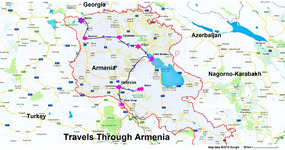
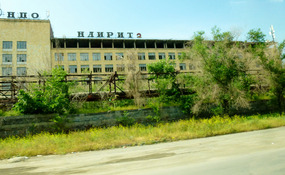
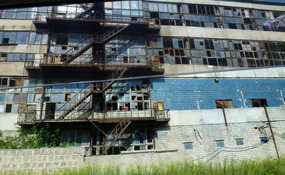
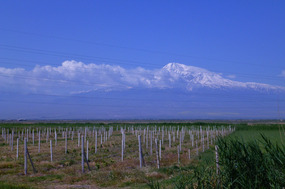
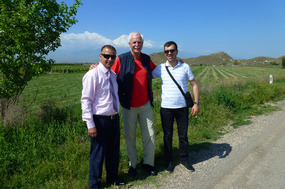
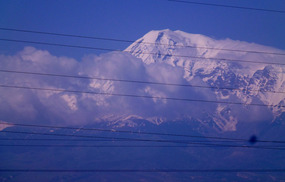
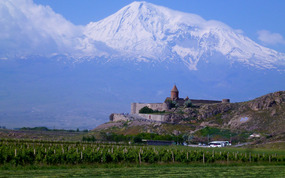
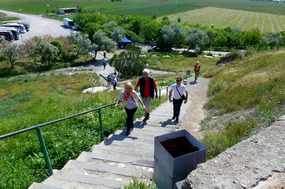

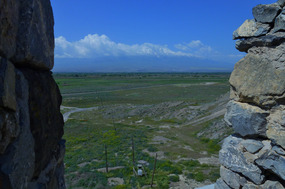
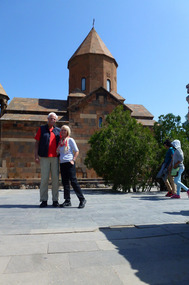
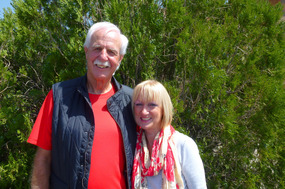
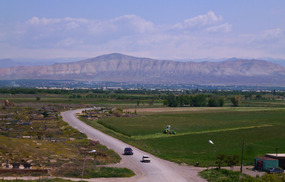
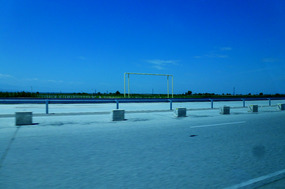
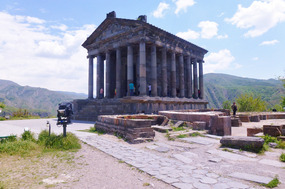
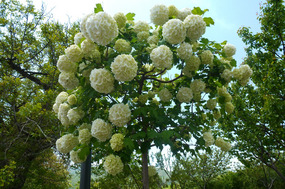
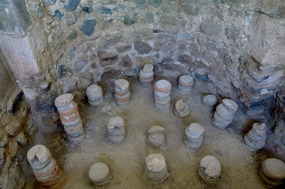
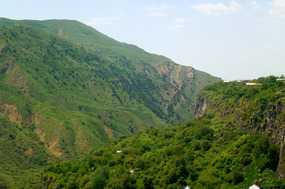

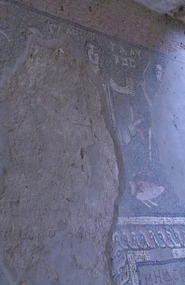
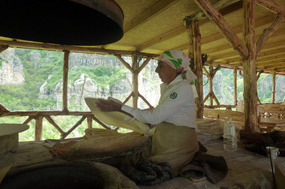
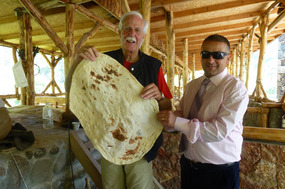
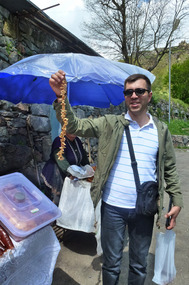
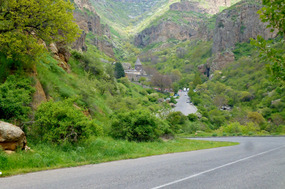
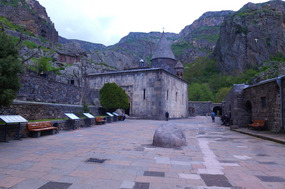
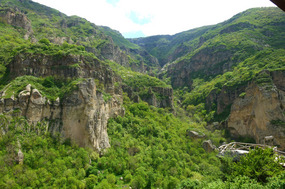

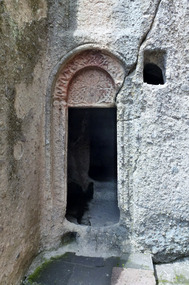

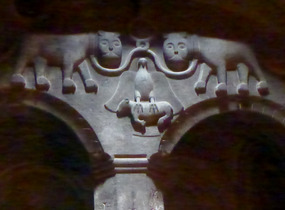
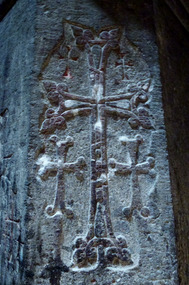
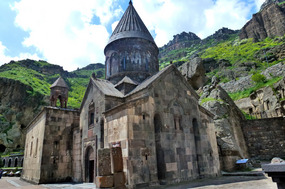
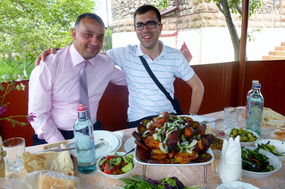
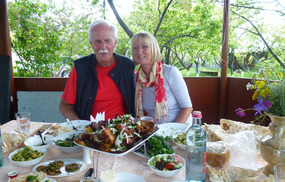
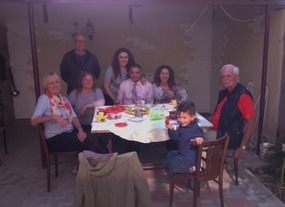
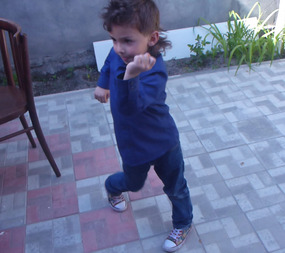






Cathy callen
2015-10-07
Wendy I'm loving sharing your travel experience through Armenia . Captivating.
crowdywendy
2015-10-08
Thank you Cathy. It gives me great pleasure writing it all - just like an additional holiday!